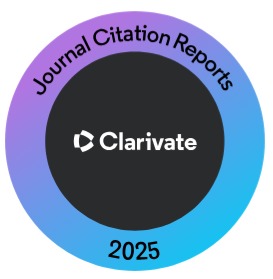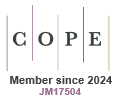Patient Satisfaction and Preference for Metered-Dose Inhalers vs. Dry Powder Inhalers in the Treatment of Obstructive Airway Disease
Keywords:
Obstructive airway disease, asthma, chronic obstructive pulmonary disease, metered-dose inhaler, dry powder inhalerAbstract
OBJECTIVE: To evaluate patient preference for different inhaler devices in the treatment of obstructive airway disease (OAD).
METHODOLOGY: This cross-sectional study was conducted at the Department of Pulmonology, Indus Hospital, Korangi Campus, Karachi, Pakistan, from July 2023 to January 2024. A non-probability, consecutive sampling technique was adopted. The inclusion criteria were patients aged 18-70 years presenting with OADs, regardless of disease duration, and using either a metered dose inhaler (MDI) or a dry powder inhaler (DPI). Patients who were using pressured MDI (pMDI) were given DPI containing the same drugs at the exact dosage for two weeks. Patients who were using DPI were given pMDI containing the same medications at the precise dosage for two weeks. Patients were trained on the techniques for using the inhalers, and the patient preference between two inhaler devices was determined using the PASAPQ questionnaire. Data analysis was performed using SPSS 26.0.
RESULTS: In a total of 100 patients, the mean age was 51.64±13.52 years. There were 59 (59.0%) male patients. Forty-nine percent of patients had COPD, whereas asthma was present in 51 (51.0%). Out of 100 patients, 50 (50%) were using MDI inhalers, and 50 (50%) were using DPI inhalers. The mean PASAPQ scores were significantly higher in terms of satisfaction (p = 0.0002), performance (p = 0.0002), and convenience (p = 0.0374) domains for DPI inhalers.
CONCLUSION: The DPI inhalers were associated with higher levels of satisfaction, performance, and convenience compared to MDI inhalers in the management of oral antidiabetic medications (OAD).
References
Park HS, Yoon D, Lee HY, Ban GY, Ming SWY, Jie JLZ et al. Real?life effectiveness of inhaler device switch from dry powder inhalers to pressurized metred?dose inhalers in patients with asthma treated with ICS/LABA. Respirology. 2019; 24(10): 972-979. doi: 10.1111/resp.13559.
Masjedi M, Ainy E, Zayeri F, Paydar R. Assessing the prevalence and incidence of asthma and chronic obstructive pulmonary disease in the Eastern Mediterranean region. Turk Thorac J. 2018; 19(2): 56-60. doi: 10.5152/TurkThoracJ.2018.17051. Erratum in: Turk Thorac J. 2018 Jul;19(3):158.
Almzaiel AJ, Al-Ameri AMJ, Tariq R. Role of Apo E and Superoxide Dismutase in Patients with Obstructive Lung Diseases. J Contemp Med Sci. 2017; 3(9): 189-192.
Rao C, Subhankar S, Alone V, Prasad DD, Sabat J. Study of Prevalence and Pattern of Infections in Acute Exacerbations of Obstructive Airway Disease. Iraq Med J. 2020; 4(3): 85-89. doi: 10.22317/imj.v4i3.879.
Mannan H, Foo SW, Cochrane B. Does device matter for inhaled therapies in advanced chronic obstructive pulmonary disease (COPD)? A comparative trial of two devices. BMC Res Notes. 2019; 12(1): 94. doi: 10.1186/s13104-019-4123-5.
Wilson SR, Strub P, Buist AS, Knowles SB, Lavori PW, Lapidus J et al. Shared treatment decision making improves adherence and outcomes in poorly controlled asthma. Am J Respir Crit Care Med. 2010; 181(6): 566-577. doi: 10.1164/rccm.200906-0907OC.
Miravitlles M, Montero-Caballero J, Richard F, Santos S, Garcia-Rivero JL, Ortega F et al. A cross-sectional study to assess inhalation device handling and patient satisfaction in COPD. Int J Chron Obstruct Pulmon Dis. 2016; 11: 407-415. doi: 10.2147/COPD.S91118.
Welch MJ, Nelson HS, Shapiro G, Bensch GW, Sokol WN, Smith JA et al. Comparison of patient preference and ease of teaching inhaler technique for Pulmicort Turbuhaler versus pressurized metered-dose inhalers. J Aerosol Med. 2004; 17(2): 129-139. doi: 10.1089/0894268041457174.
Chouaid C, Germain N, De Pouvourville G, Aballéa S, Korchagina D, Baldwin M et al. Patient preference for chronic obstructive pulmonary disease (COPD) treatment inhalers: a discrete choice experiment in France. Curr Med Res Opin. 2019; 35(5): 785-792. doi: 10.1080/03007995.2019.1574507.
Jahedi L, Downie SR, Saini B, Chan HK, Bosnic-Anticevich S. Inhaler technique in asthma: how does it relate to patients' preferences and attitudes toward their inhalers? J Aerosol Med Pulm Drug Deliv. 2017; 30(1): 42-52. doi: 10.1089/jamp.2016.1287.
Contoli M, Barile S, Nudo E, Guastalla D, Braido F. Exploring quality of life and satisfaction with treatment in asthmatic patients receiving dry powder inhalers: a multinational survey. J Asthma. 2022; 59(7): 1473-1483. doi: 10.1080/02770903.2021.1923739.
Chrystyn H, Small M, Milligan G, Higgins V, Gil EG, Estruch J. Impact of patients' satisfaction with their inhalers on treatment compliance and health status in COPD. Respir Med. 2014; 108(2): 358-365. doi: 10.1016/j.rmed.2013.09.021.
Plaza V, Giner J, Curto E, Alonso-Ortiz MB, Orue MI, Vega JM et al. Determinants and Differences in Satisfaction with the Inhaler Among Patients with Asthma or COPD. J Allergy Clin Immunol Pract. 2020; 8(2): 645-653. doi: 10.1016/j.jaip.2019.09.020.
Shayo GA, Omary A, Mugusi F. Inhaler Non-Adherence, Associated Factors and Asthma Control among Asthma Patients in a Tertiary Level Hospital in Tanzania. East Afr Health Res J. 2022; 6(1): 78-85. doi: 10.24248/eahrj.v6i1.682.
Ohbayashi H, Kudo S, Ishikawa M. Inhaler Operability and Patient Satisfaction Regarding Genuair® and Respimat® Inhalers for Chronic Obstructive Pulmonary Disease: A Randomized Crossover Study. Pulm Ther. 2017; 3: 173-185. doi: 10.1007/s41030-017-0038-2.
Beeh KM, Kuna P, Corradi M, Viaud I, Guasconi A, Georges G. Comparison of Dry-Powder Inhaler and Pressurized Metered-Dose Inhaler Formulations of Extrafine Beclomethasone Dipropionate/Formoterol Fumarate/Glycopyrronium in Patients with COPD: The TRI-D Randomized Controlled Trial. Int J Chron Obstruct Pulmon Dis. 2021; 16: 79-89. doi: 10.2147/COPD.S291030.
Levy ML, Carroll W, Alonso JLI, Keller C, Lavorini F, Lehtimäki L. Understanding Dry Powder Inhalers: Key Technical and Patient Preference Attributes. Adv Ther. 2019; 36(10): 2547-2557. doi: 10.1007/s12325-019-01066-6.
Mahler DA, Halpin DMG. Personalizing Selection of Inhaled Delivery Systems in Chronic Obstructive Pulmonary Disease. Ann Am Thorac Soc. 2023; 20(10): 1389-1396. doi: 10.1513/AnnalsATS.202304-384CME.
Bivolaru S, Constantin A, Vlase CM, Gutu C. COPD Patients' Behaviour When Involved in the Choice of Inhaler Device. Healthcare (Basel). 2023; 11(11): 1606. doi: 10.3390/healthcare11111606.
de Oliveira MVC, Pizzichini E, da Costa CH, Fritscher CC, Vianna EO, Teixeira PJZ et al. Evaluation of the preference, satisfaction and correct use of Breezhaler® and Respimat® inhalers in patients with chronic obstructive pulmonary disease–INHALATOR study. Respir Med. 2018; 144: 61-67. doi: 10.1016/j.rmed.2018.10.006.
Valladales-Restrepo LF, Saavedra-Navia JC, Montezuma-Casanova CA et al. Satisfaction with and Use of Inhalation Devices in Patients with Bronchial Asthma. J Aerosol Med Pulm Drug Deliv. 2022; 35(6): 313-320. doi: 10.1089/jamp.2022.0027.
Usmani OS. Choosing the right inhaler for your asthma or COPD patient. Ther Clin Risk Manag. 2019; 15: 461-472. doi: 10.2147/TCRM.S160365.
Usmani OS, Levy ML. Effective respiratory management of asthma and COPD and the environmental impacts of inhalers. NPJ Prim Care Respir Med. 2023; 33(1): 24. doi: 10.1038/s41533-023-00346-7.
Roche N, Devillier P, Berger P, Bourdin A, Dusser D, Muir JF et al. Individual trajectory-based care for COPD: getting closer, but not there yet. ERJ Open Res. 2021; 7(4): 00451-2021. doi: 10.1183/23120541.00451-2021.
Downloads
Published
How to Cite
Issue
Section
License
Copyright (c) 2025 Journal of Liaquat University of Medical & Health Sciences

This work is licensed under a Creative Commons Attribution-NonCommercial-ShareAlike 4.0 International License.
Submission of a manuscript to the journal implies that all authors have read and agreed to the content of the undertaking form or the Terms and Conditions.
When an article is accepted for publication, the author(s) retain the copyright and are required to grant the publisher the right of first publication and other non-exclusive publishing rights to JLUMHS.
Articles published in the Journal of Liaquat University of Medical & health sciences are open access articles under a Creative Commons Attribution-Noncommercial - Share Alike 4.0 License. This license permits use, distribution and reproduction in any medium; provided the original work is properly cited and initial publication in this journal. This is in accordance with the BOAI definition of open access. In addition to that users are allowed to remix, tweak and build upon the work non-commercially as long as appropriate credit is given and the new creations are licensed under the identical terms. Or, in certain cases it can be stated that all articles and content there in are published under creative commons license unless stated otherwise.























